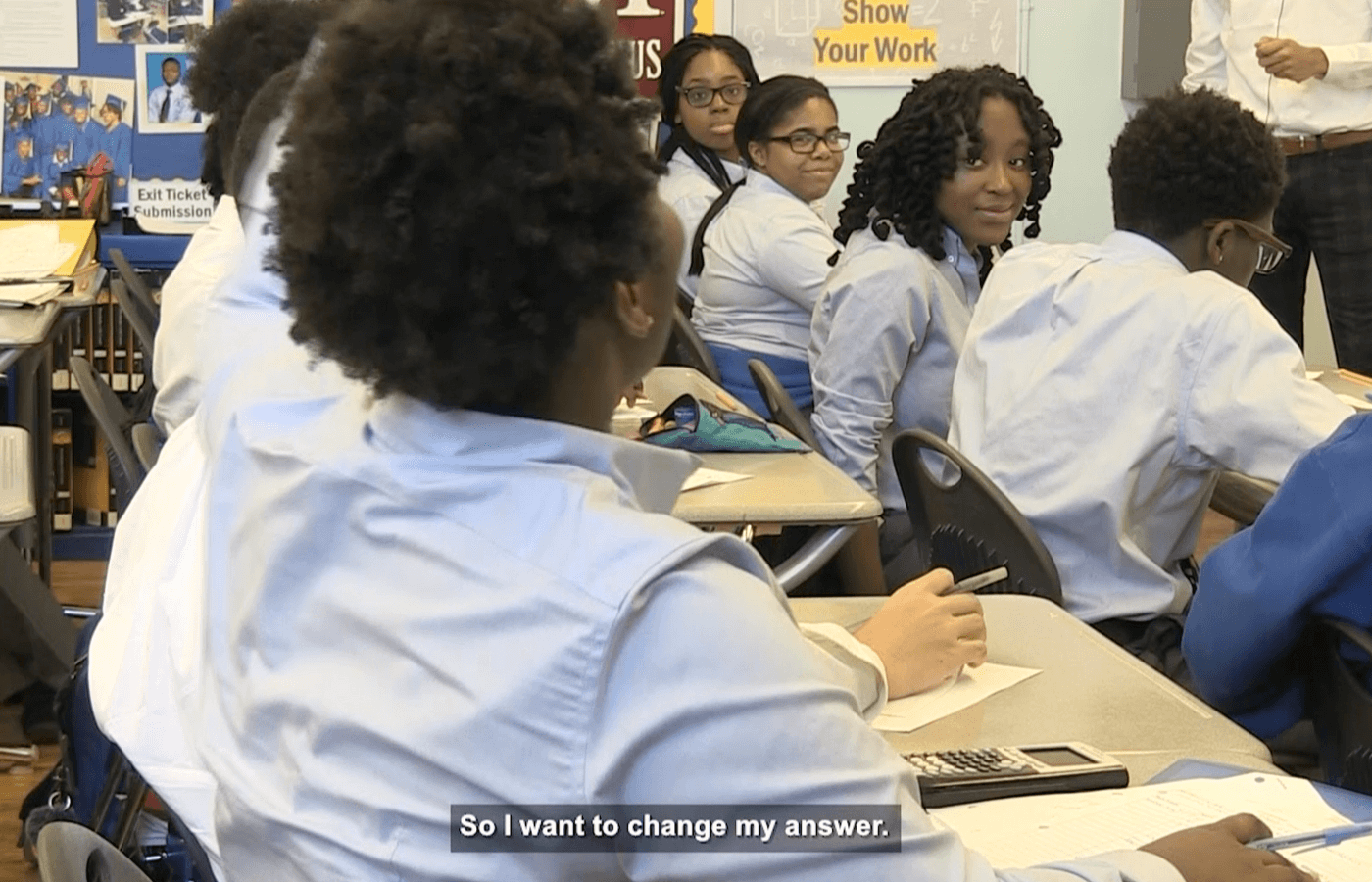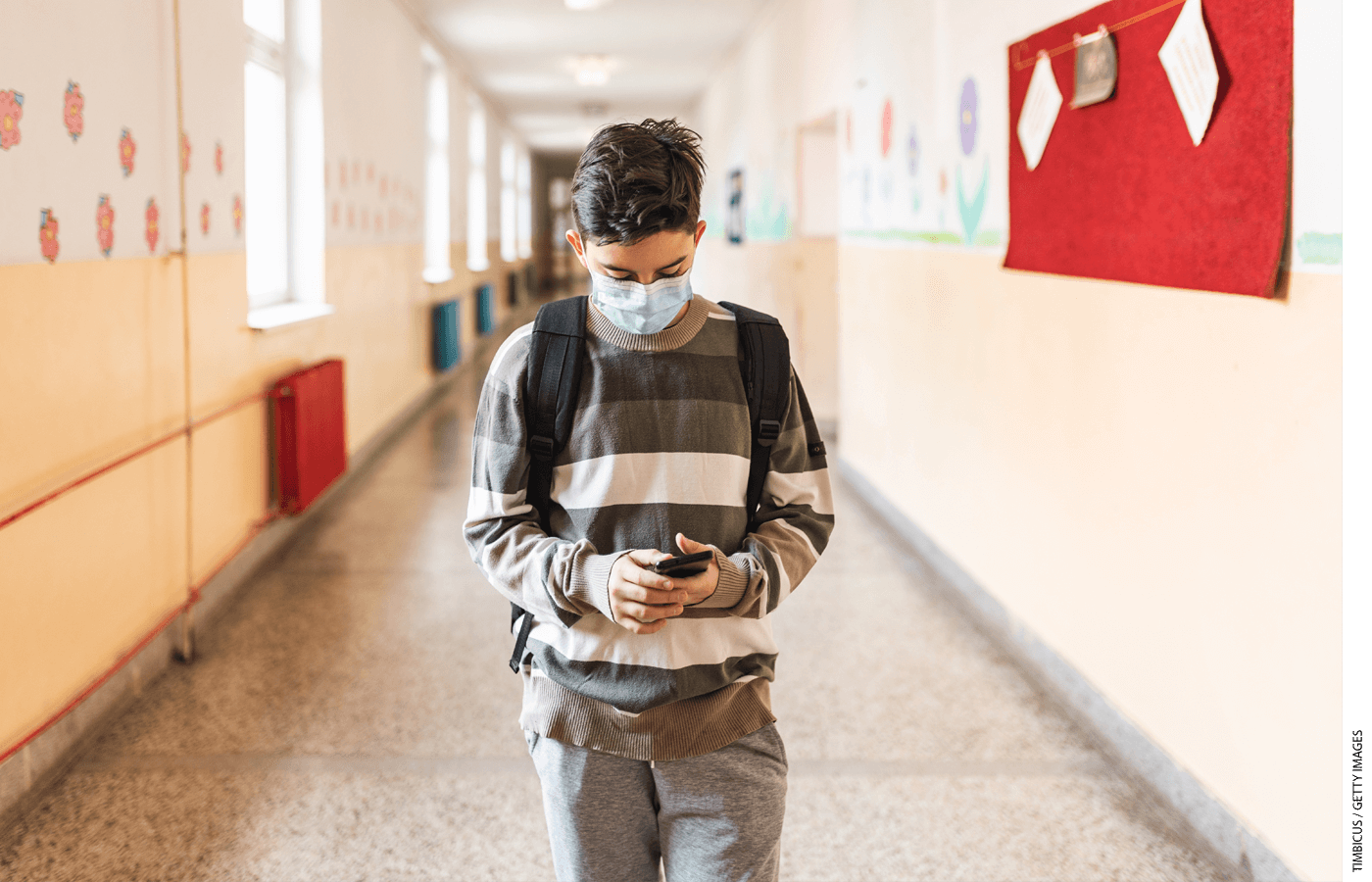
After successive school years disrupted by shutdowns, isolation, and mass experiments in remote teaching, educators returned to school in Fall 2021 to find that our classrooms and students had changed.
In the first days of the return, perhaps, we didn’t see the full scope of the changes. Yes, most of us knew that there would be yawning academic gaps. Most of us understood then what the data have since clearly borne out: despite often heroic efforts by teachers to deliver remote instruction, the pandemic had caused a massive setback in learning and academic progress. The costs had been levied most heavily on those who could least afford it, and it would take months, if not years, to make up the lost time.
But at least we were all together again, even if we were all wearing masks. We were on the road back to regular life.
As the days passed, though, a troubling reality emerged.
The students who came back to us had spent long periods away from peers, activities, and social interactions. For many young people—and their teachers—the weeks and months of isolation had been difficult emotionally and psychologically. Some had lost loved ones. Many more had endured months in a house or apartment with nearly everything they valued—sports or drama or music, not to mention moments of sitting informally among friends and laughing—having suddenly evaporated from their lives. Even students who had escaped the worst of the pandemic were out of practice when it came to the expectations, courtesies, and give-and-take of everyday life. Perhaps as a result of this, their social skills had declined.
Our students looked the same—or at least we presumed they did behind the masks—but some seemed troubled and distant. Some struggled to concentrate and follow directions. They were easily frustrated and quick to give up. Many students simply didn’t know how to get along. The media was suddenly full of stories of discipline problems, chronic disruptions due to student distractibility, lack of interest, and misbehavior in the classroom, and historic levels of student absences. In schools where no one had ever had to think about how to deal with a fight, they burst into the open like brush fires after a drought. It didn’t help that many schools were short-staffed, with leaders struggling just to get classes covered and buses on the road.
The first post-pandemic year may well have been harder than the radically disrupted 18 months of rolling lockdowns and remote learning that preceded it. The jarring disruptions related to Covid-19 aren’t the whole story, however. What has happened to our students isn’t just the impact of a protracted, once-in-a-generation adverse event, but the combined effects of several large-scale, ground-shifting trends that predate the pandemic and have reshaped the fabric of young people’s lives. As we look forward, their combined effects should cause us to think beyond short-term recovery and to reconsider how we design schools and schooling.
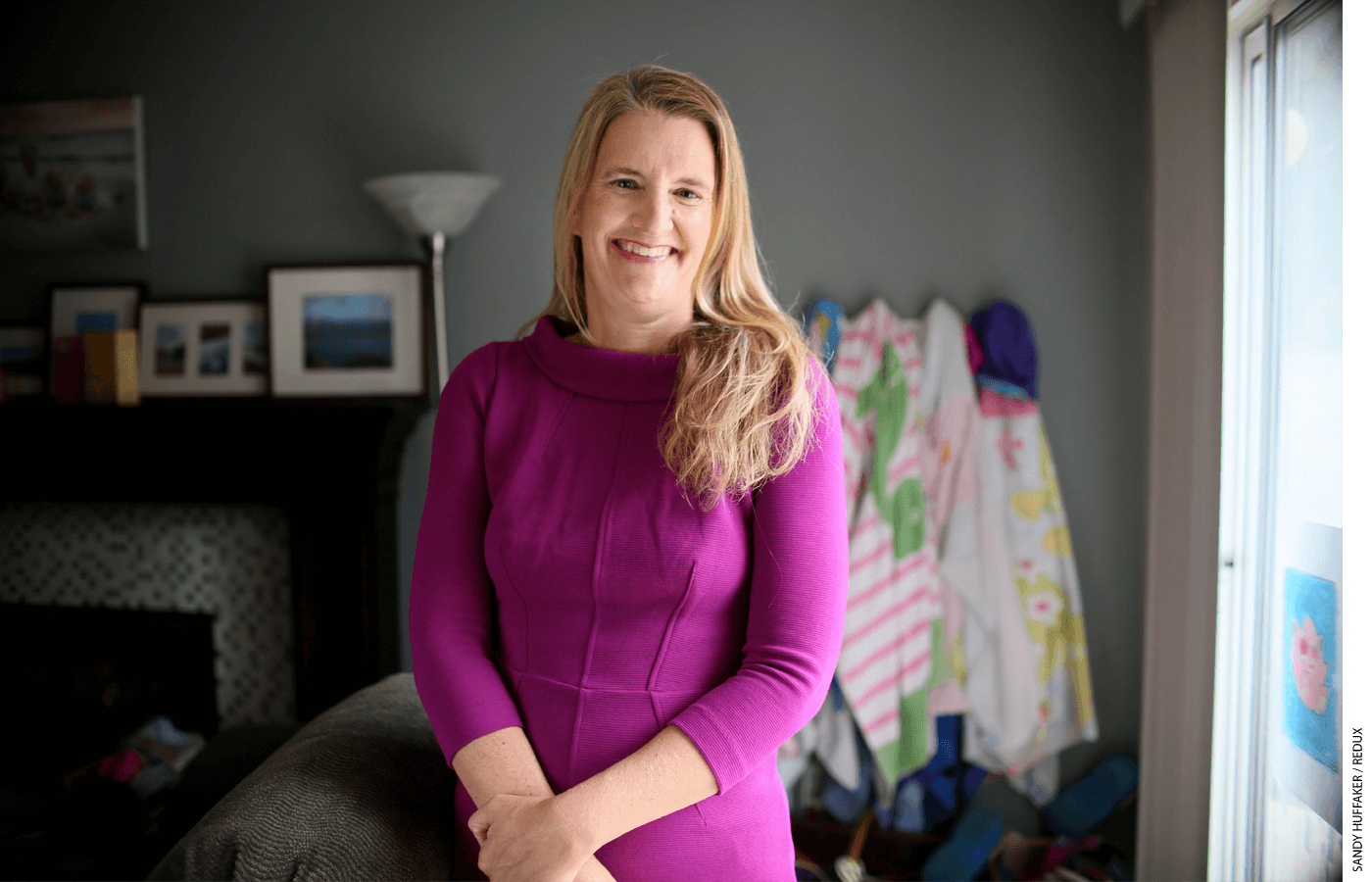
An Internet Epidemic
The pandemic occurred amid a broader epidemic. Long before Covid-19, the psychologist Jean Twenge had found spiraling levels of depression, anxiety, and isolation among teens. “I had been studying mental health and social behavior for decades and I had never seen anything like it,” Twenge wrote in her 2017 book iGen.
This historic downturn in the well-being of young people coincided almost exactly with the dramatic rise of the smartphone and social media. More specifically, it coincided with the moment when they both became universal and being disconnected or an infrequent user was no longer viable.
As a parent, I experienced this firsthand. Even before the pandemic, I was desperately trying to manage my own children’s device usage, wary of how the time they spent on their phones was increasing while the time they spent reading and doing, well, almost everything else was decreasing. We wanted to limit social media as much as possible. But when friends plan where to meet up via Instagram messenger or some other platform, and when the key information for every soccer game—where, when, which uniform—is communicated via group chat, there is no choice but to join.
Research by Twenge and others found that teenagers’ media use roughly doubled between 2006 and 2016 across gender, race, and class. In competition against the smartphone, the book, the idea of reading, lost significant ground. By 2016, just 16 percent of 12th-grade students read a book or magazine daily. As recently as 1995, 41 percent did. Meanwhile, social media was on the rise. By 2016, about three-quarters of teenagers reported using social media almost every day (see Figure 1).
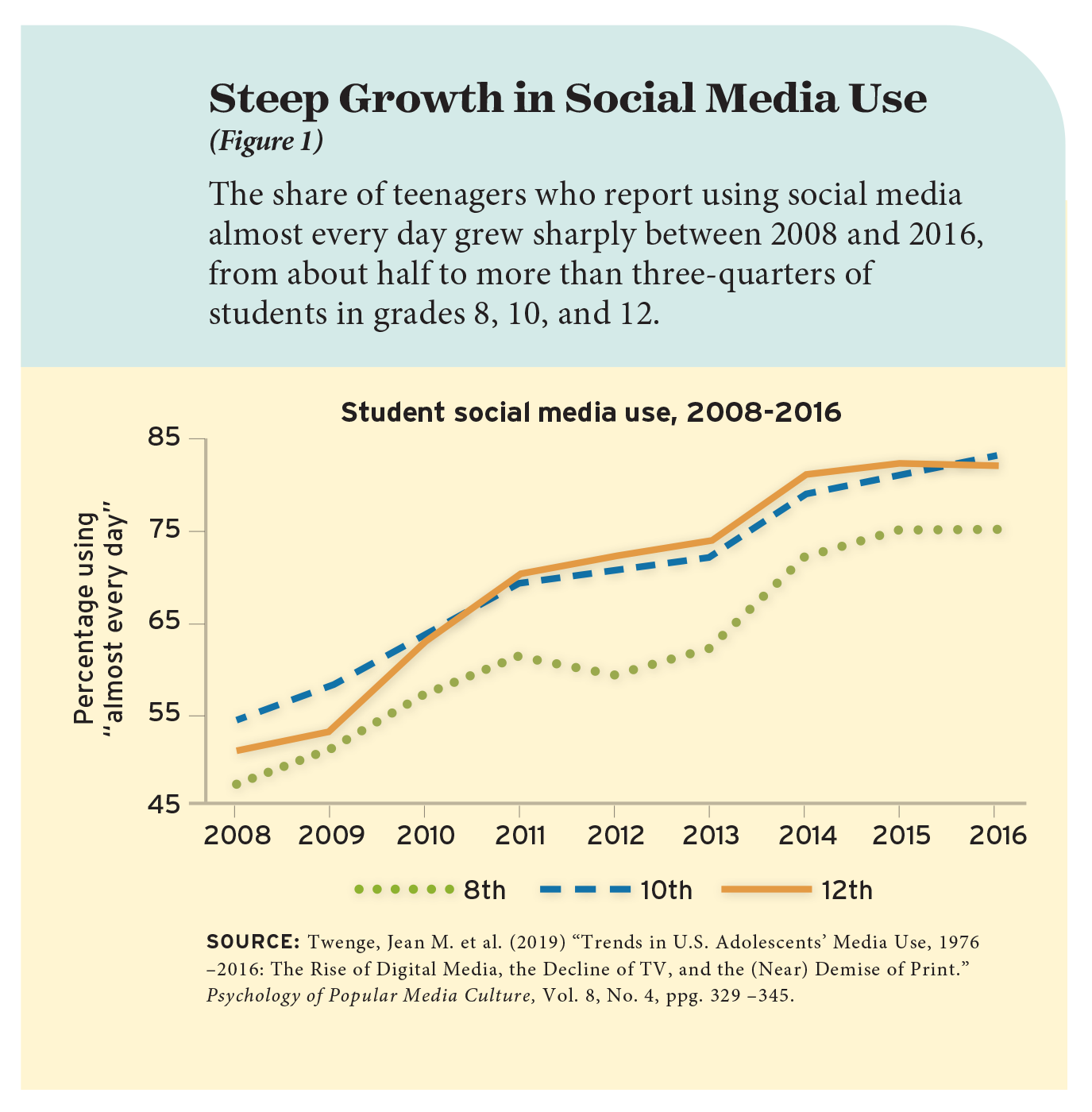
Those trends have only accelerated. A 2019 study by Common Sense Media reported that 84 percent of American teenagers own a smartphone. Parents are raising a generation that is both more connected and more disconnected than any before.
“The smartphone brought about a planetary rewiring of human interaction. As smartphones became common, they transformed peer relationships, family relationships and the texture of daily life for everyone—even those who don’t own a phone or don’t have an Instagram account,” Twenge and co-author Jonathan Haidt wrote in the New York Times in 2021. “It’s harder to strike up a casual conversation in the cafeteria or after class when everyone is staring down at a phone. It’s harder to have a deep conversation when each party is interrupted randomly by buzzing, vibrating notifications.” They quote the psychologist Sherry Turkle who notes that we are now “forever elsewhere.”
The average 12th grader in 2016, Twenge pointed out in iGen, went out with friends less often than the average 8th grader 10 years before. American teenagers were also less likely to date, drive a car, or have a job. “The roller rink, the basketball court, the town pool, the local necking spot—they’ve all been replaced by virtual spaces accessed through apps and the web,” Twenge wrote in The Atlantic. These virtual meetups are universally associated with less happiness for young people. “Those who spend an above-average amount of time with their friends in person are 20 percent less likely to say they’re unhappy than those who hang out for a below-average amount of time,” she wrote.
And that was long before Tik Tok and the latest round of social media platforms carefully designed to ensure obsession and the lingering anxiety that you really ought to be checking your phone; before the optimization of apps like Snapchat, with posts designed to disappear as soon as they are seen and therefore undiscoverable to an adult coming to a young person’s room to see what is amiss.
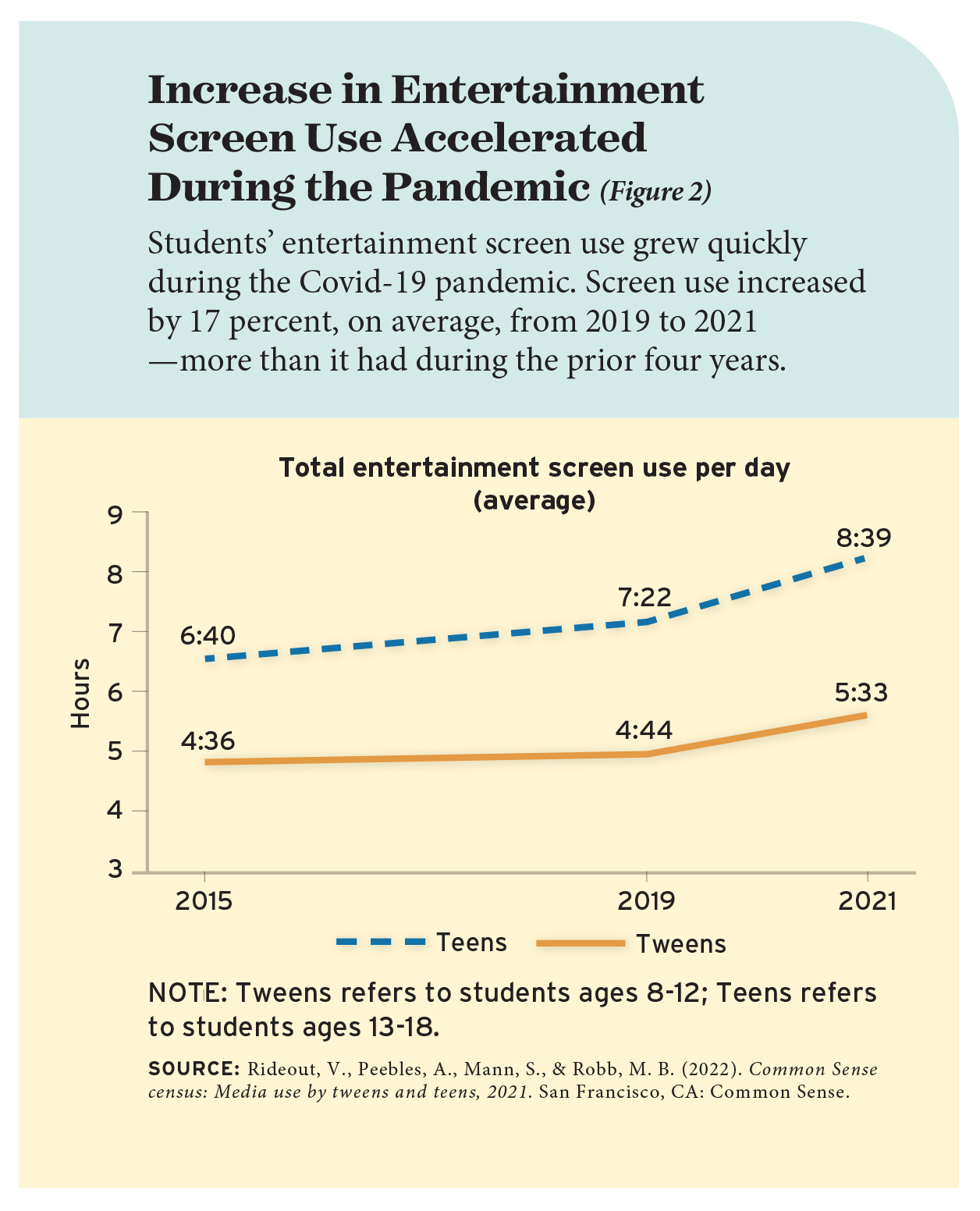
Pandemic Effects
Then in March 2020, virtually everything that might have competed with smartphones suddenly disappeared. A recent Common Sense Media study found that children’s daily entertainment usage of screens grew by 17 percent between 2019 and 2021—more than it had grown during the four years prior (see Figure 2). Overall, daily entertainment screen use in 2021 increased to 5.5 hours among tweens ages 8 to 12 and to more than 8.5 hours among teens ages 13 to 18, on average. These trends were even more pronounced for students from low-income families, whose parents were most likely to have to work in person and have fewer resources to spend on alternatives to screens.
At the levels of use that are now common, smartphones are catastrophic to the well-being of young people. As Twenge wrote, “The more time teenagers spend looking at screens, the more likely they are to report symptoms of depression. . . It’s not an exaggeration to describe [this generation] as being on the brink of the worst mental-health crisis in decades.”
Indeed, the data also show spikes in teenagers’ mental-health problems during the pandemic, when just 47 percent of students reported feeling connected to the adults and peers in their schools. Some 44 percent of high-school students reported feeling sad or persistently hopeless in 2021, according to the Centers for Disease Control. School factors had a significant effect on this data. Students who said they felt “connected to adults and peers” at school were almost 60 percent less likely to report persistent feelings of sadness or hopelessness than those who did not—some 35 percent of connected students felt that way, compared with 55 percent who did not feel connected to school. The socioemotional distress students are experiencing is as much a product of the cellphone epidemic as it is a product of the Covid-19 pandemic.
In addition, all of that time on screens—even without social media—degrades attention and concentration skills, making it harder to focus fully on any task and to maintain that focus. This is not a small thing. Attention is central to every learning task and the quality of attention paid by learners shapes the outcome of learning endeavors. The more rigorous the task, the more it requires what experts call selective or directed attention. To learn well, you must be able to maintain self-discipline about where you direct your attention.
“Directed attention is the ability to inhibit distractions and sustain attention and to shift attention appropriately,” Michael Manos, clinical director of the Center for Attention and Learning at Cleveland Clinic, recently told the Wall Street Journal. “If kids’ brains become accustomed to constant changes, the brain finds it difficult to adapt to a nondigital activity where things don’t move quite as fast.”
The Trouble with Task Switching
The problem with cellphones is that young people using them switch tasks every few seconds. Better put, young people practice switching tasks every few seconds, so they become more accustomed to states of half-attention, where they are ever more expectant of a new stimulus every few seconds. When students encounter a sentence or an idea that requires slow, focused analysis, their minds are already glancing around for something new and more entertaining.
Though all of us are at risk of this type of restlessness, young people are especially susceptible. The region of the brain that exerts impulse control and self-discipline, the prefrontal cortex, isn’t fully developed until age 25. Any time young people are on a screen, they are in an environment where they are habituated to states of low attention and constant task switching. In 2017, a study found that undergraduates, who are more cerebrally mature than K–12 students and therefore have stronger impulse control, “switched to a new task on average every 19 seconds when they were online.”
In addition, the brain rewires itself constantly based on to how it functions. This idea is known as neuroplasticity. The more time young people spend in constant half-attentive task switching, the harder it becomes for them to maintain the capacity for sustained periods of intense concentration. A brain habituated to being bombarded by constant stimuli rewires accordingly, losing impulse control. The mere presence of our phones socializes us to fracture our own attention. After a time, the distractedness is within us.
“If you want kids to pay attention, they need to practice paying attention,” is how Dr. John S. Hutton, a pediatrician and director of the Reading and Literacy Discovery Center at Cincinnati Children’s Hospital Medical Center, put it in a recent Wall Street Journal article.
There is, in other words, a clear post-pandemic imperative for schools. The first step in responding to the dual crisis of learning and well-being is to set and enforce cell-phone restrictions. An institution with the dual purpose of fostering students’ learning and well-being cannot ignore an intruder that actively erodes a young mind’s ability to focus and sustain attention and also magnifies anxiety, loneliness, and depression. Cellphones must be turned off and put away when students walk through school doors. Period.
But cellphone restrictions are only part of the equation. Schools themselves will also require rewiring.
How do we do that? The answer isn’t simple. My colleagues at Uncommon Schools Denarius Frazier, Hilary Lewis, and Darryl Williams, and I have written a book describing actions we think schools should consider. Here’s a road map of some of the things we think will be necessary.
Rewiring Classrooms for Connectedness
Extracurricular activities and social and emotional learning programs can be significant factors in shaping students’ experiences. But we should also recognize that the classroom is the single most important space when it comes to shaping students’ sense of connectedness to school. Out of a typical school day, at least five or six hours will be spent in classrooms—the overwhelming majority of students’ time. If classroom practices do little to instill a sense of belonging, students will feel a weak connection to the primary purpose of school.
But just as important, building classrooms to maximize belonging cannot come at the expense of academic achievement. We are in the midst of a learning crisis of historic proportions too. Students’ lack of progress in science, math, and reading, their reduced knowledge of history, their lessened exposure to the arts—these will have lifelong costs. Teaching needs to be better, not diluted. Classrooms need to maximize belonging and learning. It can’t be one or the other.
Happily, we think this is eminently possible. I’m thinking of a math class taught by my co-author Denarius Frazier, the principal of Uncommon Collegiate Charter High School in Brooklyn, N.Y. During a discussion about trigonometry, two dozen students engaged vigorously and energetically with one another. That is, until the beautiful moment when a student named Vanessa, who had been speaking authoritatively about her solution to the problem, suddenly realized that she had confused reciprocal and inverse functions—and that her solution is dead wrong.
Vanessa paused and glanced at her notes. “Um, I’d like to change my answer,” she said playfully, without a trace of self-consciousness. Then she laughed, and her classmates laughed with her. The moment was beautiful because it was lit by the warm glow of belonging. And that was not accidental.
Consider the image below: Vanessa is speaking as her classmates listen and offer affirming gazes. Their eyes are turned to Vanessa to show encouragement and support. Their expressions communicate psychological safety, reassurance, and belonging. In fact, it’s hard to put into words just how much their glances are communicating—and each one is a little different—but these wordless expressions are as critical to shaping the moment as Vanessa’s own character and humility. This interaction fosters and protects a space in which her bravery, humor, and openness can emerge. A space where she feels important.
How someone acts in a group setting is shaped as much by the audience and the social norms that the speaker perceives as it is by internal factors. And here those perceptions are not accidental. Frazier has socialized his students to “track”—or actively look at—the speaker and to endeavor to keep their body language and nonverbal cues positive. In Teach Like a Champion 3.0, I call that technique Habits of Attention. It is a small but critical aspect of how classrooms can maximize belonging and achievement.
Students also validated each other in other ways throughout the lesson. When a young woman named Folusho joined the discussion, she started by saying, “Ok, I agree with Vanessa…” So often, after a student speaks in class, no one other than the teacher responds or communicates that the statement was important. But when a peer’s comment begins, “I agree with…” it says implicitly that what my classmate just said is important. Such validation makes it more likely that students feel supported and successful, and that the speaker will contribute to the discussion again.
Again, this is not a coincidence. Frazier has taught his students to use phrases like that and weave their comments together, so their ideas are connected and those who have contributed feel the importance of their contributions. That technique is called Habits of Discussion. Along with Habits of Attention, it helps connect and validate students as they learn.
In addition, as Folusho was talking, her classmates began snapping their fingers. In Frazier’s classroom, that means “I agree” or “I support you.” It was a powerful dose of positive feedback at the precise moment when she, like almost anyone speaking aloud to a group of people, was most likely to momentarily wonder, “Am I making sense at all? Do I sound stupid?” Folusho suddenly got a supportive response—the snapping told her, “You’re doing great! You’re family. Let’s go!”
Again, that was deliberately woven into the fabric of the classroom. The technique, called Props, establishes procedures for students to recognize when their classmates are doing well and send affirming signals without disrupting class.
All three techniques show how a teacher like Frazier can intentionally establish a culture that reinforces both academic endeavor and a much stronger sense of belonging. And though it looks organic, there’s nothing natural about it. It’s a deliberate rewiring of social norms to maximize positive outcomes. Some skeptics label these sorts of techniques coercive or controlling, but it’s hard to watch Frazier and his students and hold on to those suspicions. Engineering the classroom to ensure positive peer-to-peer norms is about honoring young people and creating an environment that not only maximizes their learning but also their belonging—the pervading senses that school is for me and I am successful here. It’s a rewiring of the classroom that requires hard work and doggedness on the part of the teacher. But it is nothing less than students deserve.
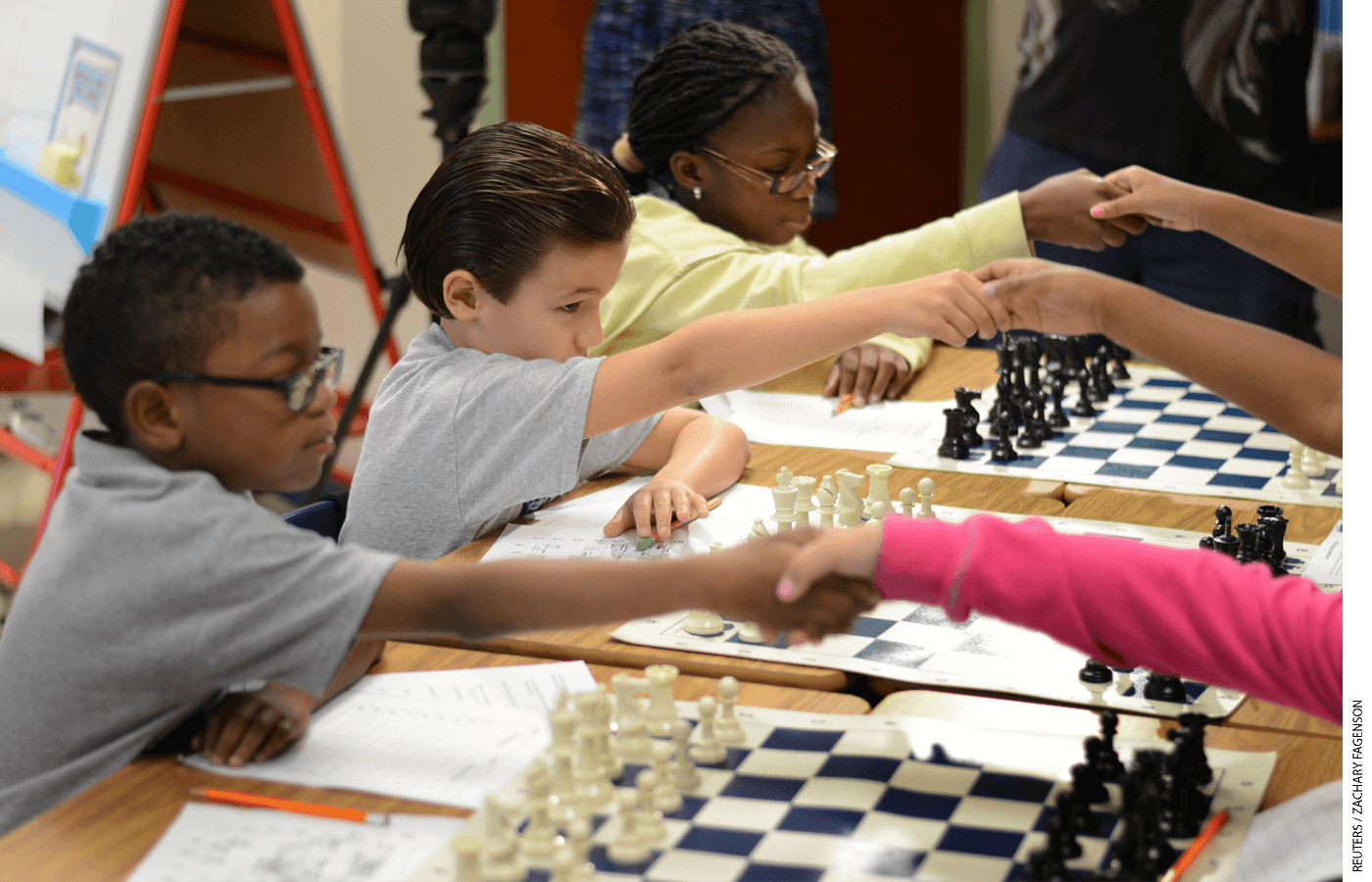
Rewiring Schools for Belonging
Rewiring a school for belonging involves rethinking many of the things we do, such as extracurricular activities. Nashville Classical Charter School provides an example of how schools might do this. In 2021, school leaders were reconsidering how its programs could intentionally build a sense of connectedness and belonging among students. Head of School Charlie Friedman and his colleagues decided to dramatically expand after-school sports programs, to allow students to explore their identities, build relationships with trusted adults, and perform in front of a crowd.
Nashville Classical extended tryout periods, to maximize students’ opportunities feel like part of a team. Leaders also offered stipends for coaching and encouraged their best community builders to coach, by explicitly valuing expertise at culture building alongside expertise at the sport. The school engaged audiences by inviting families to vote on a mascot and created an engaging game-day experience with a cheerleading squad, songs, and chants. This attracted a substantial audience, so student-athletes could compete in front of more people and fans could build community through gathering and cheering together.
It’s important to have high-quality extracurriculars that aren’t based on years of prior experience. It’s hard for a student to decide in grade 8 that they would really like to be a part of the basketball team if they haven’t already spent years playing. But that’s not true of the debate team or the Spanish club. Those activities should be as well run as any others, rather than a lonely space with obligatory supervision where the connections are peripheral at best.
Schoolwide rituals are also important to fostering a sense of belonging. For example, Frazier’s school has a regular meeting circle where the entire school is present. Students are publicly honored for their academic excellence or for being positive members of the school community.
Character education and social and emotional learning programs can also play a role. But my advice is to build a few priorities into the fabric of the school rather than buy a program to use in an isolated manner. Positive character traits should be “caught, sought, and taught,” according to my co-author Hilary Lewis. Gratitude is a great example. When students make a habit of concretely expressing gratitude to other people in the school community, it confers mutual benefits. Expressions of gratitude make the recipients feel more connected while also confering status on the giver, because their appreciation is a thing worthy of sharing deliberately.
And, as Shawn Achor explains in his book The Happiness Advantage, expressing gratitude regularly has the effect of calling students’ attention to its presence. Repetitive thinking causes a “cognitive afterimage” where we continue to see whatever it is we’re thinking about, even when we’ve shifted focus. In other words, if you continually share and expect to be sharing examples of things you are grateful for, you start looking for them. You begin scanning the world for examples of good things to appreciate and notice more of the good that surrounds you. Gratitude is a well-being builder.
Open-ended opportunities to relax and connect outside of the classroom also foster connectedness and belonging. At Cardiff High School in Wales, for example, school leaders filled a common area with games that are easy to join. They added chess boards, card tables with decks of cards, and even a ping pong table to create opportunities for engaging, positive social interaction in between classes.
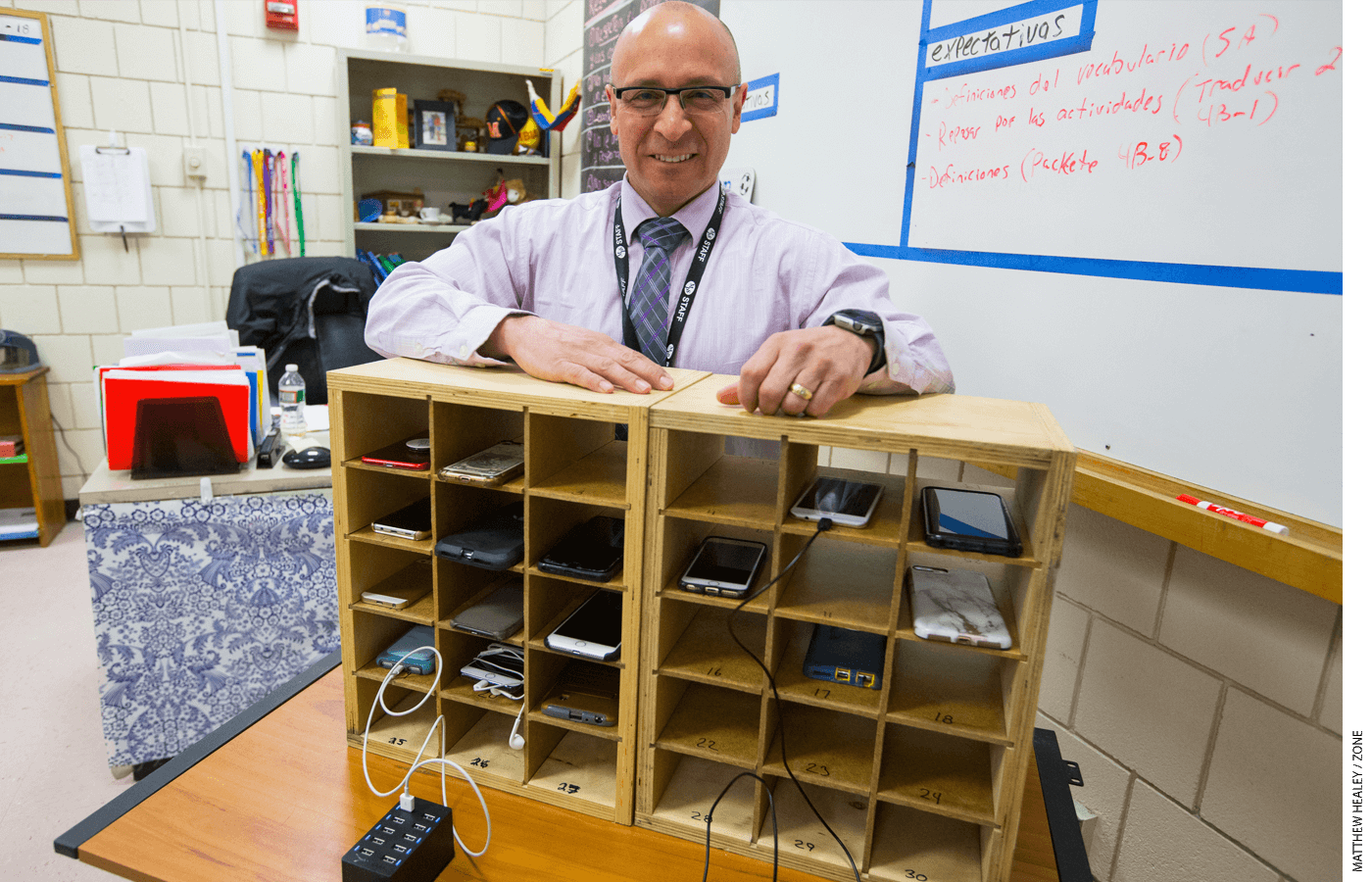
Saying No to Cellphones
These innovations can be powerful—but not on their own. The pull of smartphones and social media apps designed to distract is bound to undermine any expression of support, after-school sport, or card table. The single most important thing schools can do is to restrict cellphone access for large parts of the school day. This doesn’t mean banning phones, it just means setting rules. These can take different forms, like setting up cellphone lockers at the main entrance, requiring students to use cellphone-collection baskets at the classroom door, or limiting use to cellphone-approved zones in the school building. My personal preference is a simple policy: You can have your cellphone in your bag, but it must be turned off and cannot be visible during the school day. Not during lunch, not in the hall, not anywhere until after the last bell rings. If there’s an emergency and you need to contact your parents, you may use it in the main office. That’s it.
Schools must create blocks of time when students can work in a manner that allows them to rebuild their attentional skills and experience the full value of connected social interaction. They must also protect students’ opportunities to socialize with one another. Allowing students to use their phones as classroom tools (for quick research or as calculators, for example), or to leave them turned on (but with silent haptic notifications that distract nonetheless), or to turn them on during lunch or other learning breaks keeps them connected to their devices and disconnected from one another.
It won’t be easy, but it can be done. France has done it. The state of Victoria in Australia has done it. Some American public schools and districts have done it, in Missouri, Pennsylvania, Maine, and New York.
These bans are often followed by remarkable and instantaneous change. “It has transformed the school. Social time is spent talking to friends,” a teacher from Australia told my colleagues and me. “It is so nice walking around the yard seeing students actually interacting again, and no distractions during class,” said another.
The change, teachers told us, was quick—so long as you could get the adults to follow through. That is, if the rule was consistent and enforced, then students adapted quickly and were happy, even if they fought it at first. If the ban didn’t work, the problem was usually that some of the adults didn’t follow through. “Consistent enforcement from all = key,” one teacher explained in a note. “Can’t be ‘the cool teacher’.” The problem, of course, is that there’s a strong incentive to be “the cool teacher,” so schools must spend time making sure teachers understand the reasons for the rule and holding them accountable for supporting it.
School and district leaders should be prepared for doubts, skepticism, and pushback. We’ve seen this at the state level already. In 2019, lawmakers in four states proposed legislation to ban cellphones in school. But the bills, in Arizona, Maine, Maryland, and Utah, failed to advance. A rule that barred students from bringing cellphones into New York City public schools was ended in 2015, because then-Mayor Bill DeBlasio said “parents should be able to call or text their kids,” though individual schools may choose to limit phone access.
Two comments I often hear: “it’s an infringement on young people’s freedom” and “the role of schools is to teach young people to make better choices. We should talk to them about cell phones, not restrict them.”
The first response makes two assumptions: first, that there is no difference between young people and adults, and second, that there is no difference between the people who run a school—and therefore are responsible to stakeholders for outcomes—and the young people who attend the school. Both are mistaken. The purpose of a school is to give young people the knowledge and skills they require to lead successful lives. This always involves an exercise of social contract. We collectively give up something small as individuals and receive something valuable and rare in return as a group. It is impossible to run a school without this sort of give-and-take. Suggesting that we give students “freedom” to use cell phones whenever they want is trading valuable and enduring freedom that accrues later for a self-destructive indulgence in the present.
The argument that “schools should teach young people the skill of managing technology” is patently unrealistic. Schools are not designed to address, much less unravel, psychological dependence on portable supercomputers designed to disrupt and hold our attention. Teachers already have a daunting list of educational priorities. They are not trained counselors, and the school counselors on staff are in woefully short supply.
It’s magical thinking to propose that an epidemic that has doubled rates of mental health issues and changed every aspect of social interaction among millions of people is going to go away when a teacher says, “Guys, always use good judgment with your phones.” We’re not really wrestling with the problem if our response assumes that the average teacher, via a few pithy lessons, can battle a device that has addicted a generation into submission.
Restriction is a far better strategy. These efforts won’t be simple to execute, but the alternative is simply too damaging to students’ learning and well-being. Keep cellphones turned off and out of sight during the school day—and give students and educators a fighting chance to focus, reconnect, and build school cultures that nurture belonging and academic success.
Doug Lemov is founder of Teach Like a Champion and author of the Teach Like a Champion books. He is a co-author of the forthcoming book Reconnect, from which this essay is adapted. He was a managing director of Uncommon Schools, designing and implementing teacher training based on the study of high-performing teachers.
This article appeared in the Fall 2022 issue of Education Next. Suggested citation format:
Lemov, D. (2022). Take Away Their Cellphones … So we can rewire schools for belonging and achievement. Education Next, 22(4), 8-16.
For more, please see “The Top 20 Education Next Articles of 2024.”


